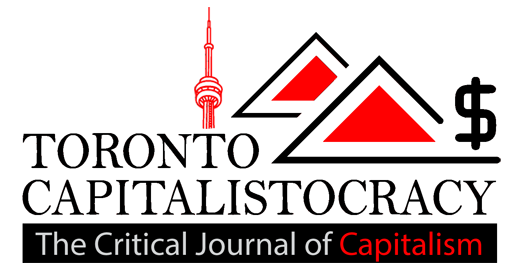Business
Task Rabbit Falling Just Short of Startup Success

NEW YORK—TaskRabbit was founded in 2008 with a big idea. On the company’s website and app, people make money by assembling strangers’ Ikea furniture or cleaning their bathrooms. There’s nothing particularly exciting about other people’s chores, but Leah Busque, a former IBM engineer who started the company, had grand ambitions. “Our mission is to revolutionize how people work,” she told Bloomberg TV last year.
TaskRabbit showed up on the heels of the iPhone, when a generation of online platforms were emerging to allow people to sell access to their cars, apartments and power drills. Their creators said this had the potential to be better for customers, but also for workers, because it gave them more flexibility. TaskRabbit quickly grabbed a place alongside Uber, Airbnb and Lyft as a symbol of what was being called the sharing economy — and would later be known as the on-demand economy, gig economy or, simply, the Uber economy. Its peers have grown into the biggest startups in existence.
TaskRabbit’s own reality has been much more modest. By March 2015, Uber drivers were handling 70,000 rides every day in New York City alone. That same month, Taskers — the company’s current name for its workers — were completing about 550 jobs per day, according to Bloomberg’s analysis of previously unreported documents TaskRabbit shared with potential investors. TaskRabbit was telling its backers it could be profitable in the near future but needed more money. To raise a new funding round last summer, it significantly lowered its valuation and also took the unusual step of raising some of the money through a crowdfunding website.
Competitors had less buzz but more business: Thumbtack, which also connects handymen to prospective clients, did $1 billion in gross bookings last year, making it about 30 times TaskRabbit’s size.
TaskRabbit declined to make executives available for interviews. But Tod Francis, a managing director at Shasta Ventures, one of TaskRabbit’s investors, said that what looked like the company falling behind was actually a decision to improve the health of its business, even it meant forgoing maximum growth. “We proactively retrenched,” he said. According to Francis, TaskRabbit has doubled its business over the last year, even without the subsidies that ride-hailing and delivery companies have used to increase volume. TaskRabbit executives have said repeatedly over the last 18 months that the company would be profitable by the end of 2016. They’ve backed away from that claim but insist it will get there soon.
Despite TaskRabbit’s setbacks, policy-makers, academics and journalists regularly include it on the short list of the industry’s major players. When a U.S. congressional committee called a hearing this spring about tax policies for on-demand workers, TaskRabbit’s vice-president of marketing testified. Health and Human Services officials recently deputized the company to help spread the word about Obamacare.
Saif Benjaafar, who runs the Sharing Economy Initiative, a research project at the University of Minnesota, credits TaskRabbit with helping create a movement. “It certainly pioneered this business model built around the flexible workforce,” he said. Its problem, he said, was that it tried to give its users too much freedom over the type of services and the prices it charged. The most successful companies exerted as much control as possible to create more focused services. “There are some natural limits to the TaskRabbit model,” Benjaafar said.
Busque founded TaskRabbit with her husband, Kevin. One evening, the couple was going to dinner, then realized they needed dog food. They would have been happy to pay someone to run the errand. Busque left her job at IBM to create a company to make that possible.
Busque ran TaskRabbit out of her house, then Zipcar’s office in Cambridge, Mass., then from San Francisco, where the company became an object of fascination to the media. Busque spoke compellingly about how TaskRabbit wasn’t just a business but a way to use the Internet to create a version of old-fashioned neighbourliness on a massive scale. At first, customers would post a request, and Taskers would bid on the job. Busque wanted to create a flexible marketplace for workers, where customers could go to find all kinds of services.
TaskRabbit was tantalizingly close to some huge opportunities. In its early days, a good amount of the traffic on TaskRabbit’s website was requests for rides to the airport. But building a ride-sharing service required singular concentration to match riders to drivers in real time. Also, the questions about insurance and regulation were complex. TaskRabbit never nurtured the business. So Lyft, a company whose founders Busque was friendly with, started recruiting drivers from TaskRabbit. Their company took off faster than TaskRabbit ever had.
TaskRabbit began to stagnate. In 2013, it laid off a significant chunk of its workforce. In 2014, the company scrapped the auction process and conceded it needed to focus on a few categories: house cleaning, handyman services, moving and delivery. The quirkier stuff still exists — the Chicago Tribune highlighted the funniest TaskRabbit jobs posted by Cubs fans during the World Series, including a request to go around Chicago, buying newspapers when the team won. But the site’s design downplays everything but its core services.
The changes were painful. It generated $2.1 million in revenue in 2014, losing $8.6 million. In the presentation it showed investors in early 2015, it said it could bring $6.5 million in revenue in 2015 and $25 million in 2016. It was a hard sell.
TaskRabbit raised money from existing investors, while also selling some shares through DreamFunded, an equity crowdfunding website. According to documents circulated by DreamFunded, the company was asking for a $40-million valuation. TaskRabbit has not made its previous valuations public. But the DreamFunded transaction valued each share at less than a third of their value from a previous fundraising round in 2012, according to an analysis of financial filings by research firm CB Insights.
According to TaskRabbit, its underlying problems were solved by the 2014 changes. But many people who work in the on-demand economy said the company seems to have downgraded its ambitions.
Busque stepped down as chief executive officer this spring after having a baby, and Stacy Brown-Philpot, the company’s operating chief, took over. Brown-Philpot, a former Google executive, has been vocal about sustainable growth and maintaining the company’s unit economics — how much it makes per transaction. In September, she described the sharing economy as “sort of an old term,” in an interview with Recode. “We’ve moved from, you know, neighbours helping neighbours to being a business where you can get home services on demand,” she said.
TaskRabbit sees several paths forward. The majority of its business is in four cities — San Francisco, Los Angeles, New York and London. It wants to expand its smaller markets. The company has also made a big deal out of a partnership with Amazon.com. The e-commerce giant includes Taskers among the providers listed on Amazon Home Services, which is essentially Amazon’s version of TaskRabbit. The startup declined to provide any details about the performance of the Amazon deal. If Amazon wanted to buy the company, Brown-Philpot said at a conference last month that she’d consider it.
Tom Erickson, one of Busque’s early advisers, is convinced that TaskRabbit’s big idea is still alive. The outsized success of other companies doesn’t take away from what Busque has achieved, he said. “When you start a business, you try a bunch of different things, and you don’t know which is going to work,” he said. “The public is fickle.”
Business
Beauty Week is back at Hudson’s Bay in Toronto and it’s time to get glam

Beauty enthusiasts rejoice! Beauty Week at Hudson’s Bay is back in Toronto for another year. It’s time to stock up on all of your fall essentials and, maybe discover some new ones.
From Friday, August 18 to Sunday, August 27, you can expect a truly elevated beauty experience in-store with incredible special offers, limited-time gifts, and exciting activations.
If you’re a diehard beauty lover, you’ll already know that Hudson’s Bay is the place to shop thanks to its extensive range of over 195 skin and makeup brands from both luxury labels and masstige brands — including Tata Harper, Estée Lauder, YSL, Nars Cosmetics, Bobbi Brown, and so much more.
Throughout The Bay’s Beauty Week, visitors can take in some at-counter activations and interactive expert-led tutorials, where there will be chances to get makeup touch-ups from top-tier brands, try a spritz of the most alluring fragrances, and sample tons of new products.
This year’s Beauty Week highlight is the ‘Best in Beauty’ tote, a meticulously-curated selection of 30 deluxe samples from an array of top-tier brands like Dr. Barbara Sturm and Shiseido spanning skincare, fragrance, and makeup — all in a super sleek bag.
The tote, which is valued at over $300, is retailing for just $39 and is a fantastic way to explore new products (without breaking the bank). However, there is a limited quantity, so if you want to get your hands on one, you’ll need to be fast.
Wondering exactly what Beauty Week’s free gifts with purchases entail? If you spend over $95 at Lancôme, you will receive a six-piece set valued at $130. Or, you can get an Estée Lauder gift valued at $170 with purchases over $80. (And that’s just to name a few.)
If you’re a Hudson’s Bay Rewards member, you’ll also get $20 in Hudson’s Bay rewards when you spend over $100 on beauty.

Business
The Canadian Armed Forces are hiring for several non-combat military jobs

The Canadian Armed Forces (CAF) have several non-combat jobs, some of which do not require a college degree or past work experience.
Life in the forces has several benefits, such as paid education plans (college, university and graduate-level programs), 20 paid vacation days, health and dental coverage for you and your family, maternity and paternal leave, and pension plans. You can learn more about the benefits in detail here.
And to make it easier to gauge if you qualify, the listings also include related civilian jobs to see if it’s your ideal role.
Financial services administrator
Related civilian jobs: Financial records entry clerk, financial manager, accounting technician, bookkeeper, budget officer, cashier clerk, business planner technician, and verification manager.
Description: You’ll help budget resources for all military activities besides providing financial assistance.
Education: You need to have completed Grade 10.
Duties: As a financial services administrator, you’ll be responsible for bookkeeping and managing budgets. You’ll also provide support in accounts payable and accounts receivable.
Work environment: Those in this role work at CAF bases, on ships or overseas. You might also be expected to help special operation units, recruiting offices, schools, and medical organizations.
Postal clerk
Related civilian jobs: Mail clerk, mail sorter.
Description: You’ll provide postal services to members and their families at bases and establishments.
Education: Grade 10. No previous work experience or related career skills are required.
Duties: As the postal clerk, you’ll handle mail duties.
Work environment: Besides a postal office, you may work on a ship or a mobile postal van. You might be expected to serve with Royal Canadian Navy, the Army, and the Royal Canadian Air Force in Canada and abroad.
Dental technician
Related civilian jobs: Dental assistant, dental hygienist.
Description: You’ll be helping dental officers provide dental services to CAF members, their families, and dependents.
Education: Level II dental assisting diploma from an accredited college or a National Dental Assisting Examining Board (NDAEB) certificate.
Duties: Those in this role will be responsible for various responsibilities, including disinfection and sterilization of dental equipment, applying rubber dams, placing cavity liners, and controlling bleeding. In addition, you’ll assist in laboratory procedures like creating casts, custom trays, and mouthguards.
Work environment: This role will require you to work in a military dental clinic, a Mobile Dental Clinic, an Air Transportable Dental System, or onboard a ship. You might be expected to work on a base in Canada or other operations in other parts of the world.
Human resources administrator
Related civilian jobs: Records administrator, data entry supervisor, receptionist, office manager, executive assistant, payroll clerk, and information management technician.
Description: Provide administrative and general human resources support.
Education: Grade 10. No previous work experience or related career skills are required.
Duties: In addition to human resources administration and services, you’ll be handling pay and allowances, managing automated pay systems, and maintaining personnel records.
Work environment: HR administrators work at all CAF bases in Canada. They also work on ships and overseas to support the Canadian Army, Royal Canadian Navy, or Royal Canadian Air Force operations.
Medical assistant
Related civilian jobs: Emergency medical responder, ambulance and first aid attendant, registered nursing assistant, licensed practical nurse, and hospital orderly.
Description: Successful candidates will help treat the sick and injured in CAF units. You’ll be assisting and supporting nursing and medical officers.
Education: Minimum of Grade 11 biology, Grade 10 physics or chemistry, and Grade 10 math.
Duties: You’ll provide initial care and essential life support treatments in trauma cases. You’ll help with health assessments (hearing and vision tests, perform basic lab procedures, etc.) and initiate and manage medical records and reports. You’ll also be expected to provide support and first aid during training exercises.
Work environment: Medical assistants may serve with the Royal Canadian Navy, the Royal Canadian Air Force or the Canadian Army as part of the Canadian Forces Health Services Group. Those in this role are exposed to the same risks as the forces they support.

Business
Porter’s new loyalty program promises to match Air Canada’s Aeroplan status

Porter Airlines is once again stirring the pot among Canadian airline rivals, now going after Air Canada’s Aeroplan members by offering to match their loyalty status to an equivalent of their own.
The beloved airline, which recently ranked as having the best cabin service in North America, challenged the competition for the second time this year, after previously deploying a similar tactic against WestJet in the spring.
Earlier in April, Porter presented customers with a limited-time offer to match the loyalty status of WestJet’s patrons with VIPorter levels.
Now, they’re offering Aeroplan members to seamlessly transition to an equivalent VIPorter Avid Traveller status based on their existing membership tier.
Members can then take advantage of an array of travel perks that come with flying Porter, including seat selection, baggage, and flight changes.
For those currently holding an Aeroplan membership, there are two ways to acquire the Avid Traveller status for the rest of 2023:
Status-Based Match:
- Aeroplan 25K members = VIPorter Venture
- Aeroplan 35K members = VIPorter Ascent
- Aeroplan 50K, 75K, and Super Elite = VIPorter First
Flight Segments-Based Match:
- 5 flight segments = VIPorter Passport
- 8 segments = VIPorter Venture
- 17 segments = VIPorter Ascent
- 28 or more segments = VIPorter First
Members will have to first submit their applications on Porter’s website. Registration will remain open until September 6, 2023.
In order to maintain their membership level through 2024, customers will have until the end of 2023 to reach the following reduced qualifying spend (QS) targets:
- Passport = $500 in QS
- Venture = $750 in QS
- Ascent = $1500 in QS
- First = $2500 in QS
Over the past year, Porter has launched an aggressive expansion strategy, including everything from introducing longer flights on newly-purchased jet planes flying out of Toronto Pearson, free WiFi, and a new all-inclusive economy experience.
With Canadians losing both Swoop and Sunwing as WestJet incorporates both into their mainline business, Porter’s direct competition is welcome to keep prices competitive.




